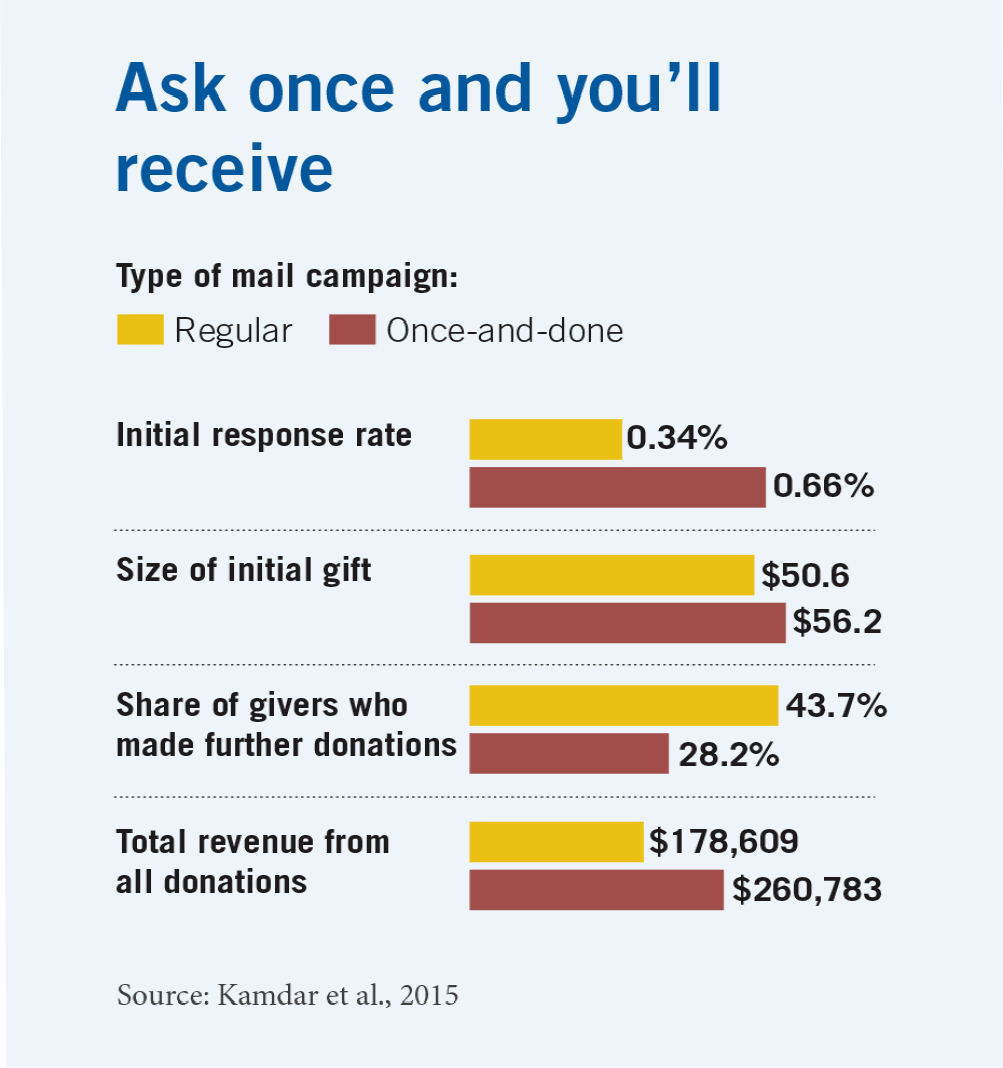
Does Poverty Make You Behave Differently?
Research suggests the experience of poverty can shape decision-making.
Does Poverty Make You Behave Differently?How to get donors to give more
Promising to ask for a donation once and never again can increase total contributions.

The once-and-done strategy generated an initial response rate nearly twice as large as that of the regular mail campaign.
Amee Kamdar, Steven D. Levitt, John A. List, Brian Mullaney, and Chad Syverson, “Once and Done: Leveraging Behavioral Economics to Increase Charitable Contributions,” Working paper, January 2015.

Research suggests the experience of poverty can shape decision-making.
Does Poverty Make You Behave Differently?
When choosing between two pools of resources, people tend to strategically select the smaller one.
Why We Have Trouble Winning at ‘Pool-Choice’ Strategy Games
The expectation of symmetry in social relationships can influence behavior and even deter crime.
Line of Inquiry: Anuj K. Shah on Why Learning about Others Makes Us Feel Less AnonymousYour Privacy
We want to demonstrate our commitment to your privacy. Please review Chicago Booth's privacy notice, which provides information explaining how and why we collect particular information when you visit our website.